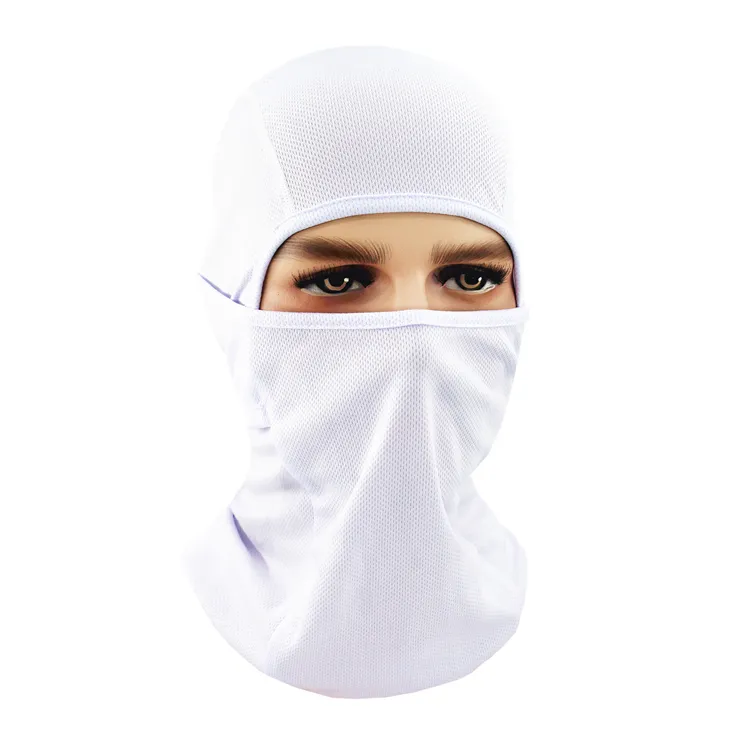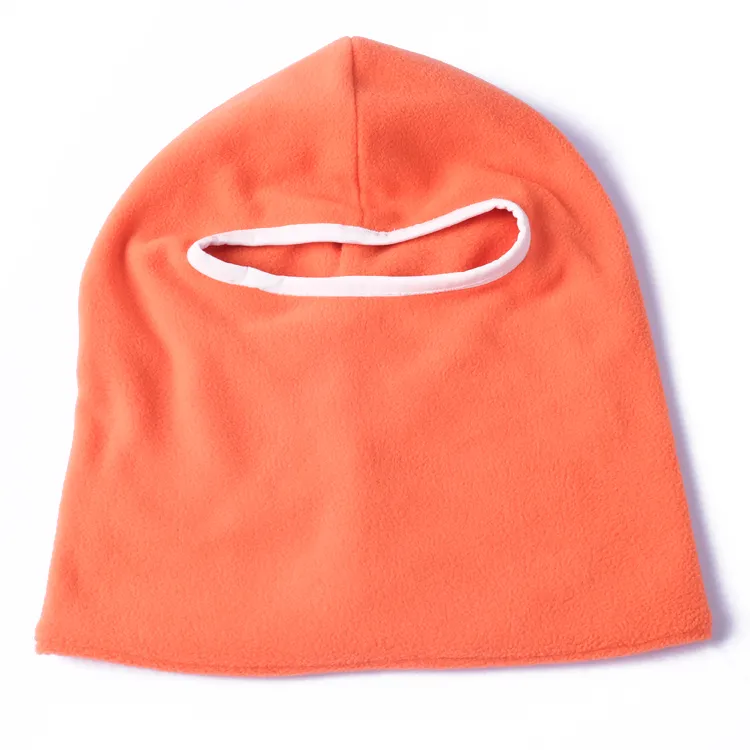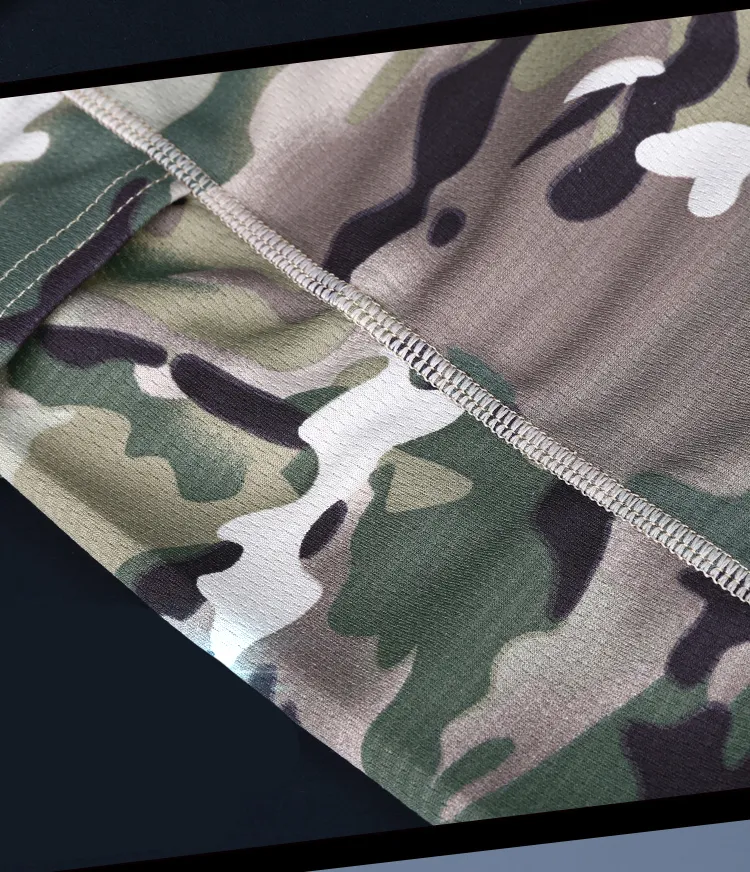In winter, a custom balaclava can provide you with better warmth. In today's article, you will learn more about Balaclava, its function, history, fabric, and the manufacturing process. Take it and start reading!!
Woven Balaclava is made by quilting knitted fabrics. Usually, cashmere, fleece, polyester, spandex, and other materials are used.
l On its history. During the Crimean War (1853-1856), British soldiers donned knitted headgear that covered the top and lower portion of their face, exposing only their eyes, to keep warm during The Battle of Balaclava.
l On its function. The most apparent purpose of the Balaclava is to keep the wearer warm and dry. It can cover the head, and lower part of the face, heat from the top of your head doesn't escape.
Skiers and snowboarders commonly utilize the custom ski mask to protect them from chapped skin and frostbite in extreme conditions. Winter mountaineers wear ski masks for added warmth and protection.

Online patterns are becoming increasingly popular. Many sellers customize woven ski masks directly from their customers' designs. Instead of designing it yourself, they use POD, ODM, etc. Common patterns are camouflage style, simple logos, etc.
According to the Best Reviews, merino wool is the best material for most kinds of winter sports. It's odor-resistant, moisture-wicking, and will keep you warm.
Nylon, polyester, and spandex blend for great flexibility and are incredibly lightweight. Also, avoid using cotton.

Balaclava is easy to breathe and easy to carry.
Size: The natural length and width are 18 and 10.5 inches, respectively. The highly stretchable circumference is about 20-24 inches.
Step 1. Looking at the layout sheet on your pattern instructions, follow what it says on how to lay out the pattern pieces.
Step 2. Find the long grain line on the pattern piece–a long arrow and make sure that this is straight and on the grain of the fabric.
Step 3. Using a tape measure, measure from the end of the arrow to the hem (the raw edge). Put a pin in this end.
Step 4. Repeat for the other end, making sure you have the same number, and put a pin on this side.
Then finish cutting out your pattern piece for the Balaclava.
-Place the right side together. Then you sew around the outside curved edge.
-Zig-zag stitch all of the raw edges. This will add a serged look if you do not have a serger.
(TIP: If you are using a domestic machine. Switch the device to the ZIG ZAG stitch. This will help with the stretch of the fleece. It helps to prevent the thread from snapping.)
(TIP: Stitch precisely on edge. This will make the garment look professionally made on the inside by covering up the raw edge.)
(TIP: We highly recommend using a serger. Sergers are great for getting a clean-cut edge and knit fabrics.)
Measure where you want the eyelet to set—Mark on both sides of the hood. Cut holes and place eyelet in hole. Then add backing and an eyelet tool and hammer to put in place.
(TIP: Keep in mind the hem of the front edge. This will help you determine where to place the eyelet. You will want to set it deep enough to thread the cord through the hem easily.)
(TIP: Use more oversized eyelets. This makes the overall product look more quality and easier to use.)
-Place right sides together.
-Sew along the back edge with a zigzag stitch.
-Fold over with wrong sides touching. It will show the actual height of the inside neck.
(TIP: Adjusting the height will give you a different look. The taller you make it, the higher it will set on your face. The pattern is designed to fall around your nose, so keep that in mind when making adjustments.)
The basic stitch that is used for sewing. The most common use for a straight stitch is to sew two pieces of fabric together. It can also be sewn with a few stitches in reverse at the beginning and end of a seam to secure the seam ends.
Using straight stitches arranged in groups, you can make simple leaves and flowers or geometric designs. It also works well for creating a textured look in a design. You can mark the fabric ahead of time, or work the stitch freestyle, creating an infinite number of unique patterns.
Zig zag stitch loose strands, user serger(optional):
Cavan Images / Getty Images
There are two ways of sewing products, serger or zigzag stitch.
l Introduction of a serger. A fantastic sewing machine that helps speed up your sewing time while doing duties that you would typically do with regular sewing machines.
l How to use a serger. First, you read the manual; then you understand the serger type, then you thread a serger, tension and needle adjustment, then thread needles on a freaking serger.
l Function of a serger. First, it saves time - With the Serger, you are looking at doing several tasks at the same time. Then for better results - A Serger should give you professional-looking results that are second to none. Also, it keeps the stretch - The overlock stitch will make sure your knits stretch naturally and without ruining your seams.

l Introduction of a zigzag stitch. Zigzag stitches are used to protect the raw edges of the material. The zigzagging thread prevents the edges of the fabric from unraveling. There are also decorative types of zigzag thread, but here we will be creating an overcast stitch type of zigzag stitch.
l How to zigzag stitch. Use a needle and a thread. First anchor the stitch, then begin the zigzag with an overcast stitch, then start to zigzag over the edge, create the zigzag stitches, and you finish.
l Purpose of zigzag stitch. This secures the edges of each seam to keep the fabric threads from unraveling. Sewing machines can quickly take care of a zigzag stitch, but if you are hand-sewing a small repair, it may be quicker and more convenient to complete the zigzag stitch with a needle and thread.
l Detail on ironing. When ironing the seam on a flat surface, ensure that no unwanted crease lines are formed on the face of the seamline. Keep the seam as flat as possible in the ironing process. As always, use a protective cloth with heat-sensitive fabrics, especially when pressing from the face of the garment.
l Benefit of ironing. Ironing as you go will not only ensure all seams lay flat and smooth but also aid in the sewing process by stabilizing seam allowance edges and fold lines.
Step1: Place the Balaclava on your head, and ensure the opening is at the front. Now gently roll the rim downwards until the cover of the Balaclava is located on your head.
Step2: Afterward, roll the remaining part of the downward to get to your neck and part of your shoulders, although this will strictly depend on the nature of the Balaclava you're using. If you have a long balaclava, push the end of the Balaclava into your collar or T-shirt. Now drag the opening a bit downward to create enough space to breathe.
Step3: Drag the underside downwards while trying to straighten up the openings meant for the eyes. Doing this appears easier if you are using a flexible balaclava. You can line the opening that is intended for your face.
Do Balaclava Manufacturers Offer Customization?
Yes, and we provide simple logo customization; MOQ is 48; for full-print Balaclava, the MOQ will be higher, it is 500. Get started.
"A balaclava is your one-stop-shop face protection," a close-fitting hood that combines the warmth of a beanie with the protection of a neck gaiter in one sleek, low-profile piece.
Any ideas about Balaclava? Please share your ideas below and let us know what you are thinking!!